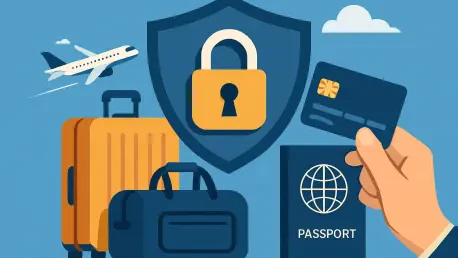I’m thrilled to sit down with Katarina Railko, a seasoned expert in the hospitality and travel industry. With years of experience in tourism and a deep understanding of the entertainment and events sector, Katarina has become a trusted voice in navigating the complexities of travel payments and fraud prevention. Today, we’re diving into the innovative strategies shaping secure transactions for airlines and online travel agencies, the unique challenges of payment security in this field, and how cutting-edge technology is transforming the merchant experience on a global scale.
How do strategic partnerships play a role in enhancing payment security and performance for travel merchants?
Strategic partnerships are absolutely critical in today’s travel industry, especially when it comes to payments and security. By combining expertise in payment orchestration with advanced fraud prevention, these collaborations create a robust ecosystem that tackles both efficiency and risk. For travel merchants like airlines and online travel agencies, this means smoother transactions, higher approval rates, and fewer fraudulent losses. It’s about building a seamless experience for customers while protecting the bottom line, and partnerships allow companies to leverage specialized technologies that they might not develop in-house.
What are some of the biggest payment-related challenges currently facing the travel industry?
The travel industry faces a unique set of hurdles with payments. Fraud is a massive issue—scammers target high-value transactions like flight bookings, often using stolen card details. Then there’s the problem of false declines, where legitimate customers are turned away due to overly cautious systems, costing merchants significant revenue. On top of that, the global nature of travel means dealing with multiple currencies, varying regulations, and diverse payment methods, which adds layers of complexity to ensuring secure and efficient transactions.
How does fraud in the travel sector differ from other industries, and why is it so tough to combat?
Fraud in travel is particularly tricky because of the high ticket values and the time gap between purchase and service delivery. Unlike retail, where a product is shipped right away, a flight or hotel booking might not be used for months, giving fraudsters a window to exploit. Plus, the industry’s reliance on digital platforms makes it a prime target for sophisticated attacks like account takeovers or synthetic identity fraud. Combating this requires not just pre-payment checks but ongoing monitoring, which isn’t as common in other sectors.
Can you explain the importance of monitoring transactions after the initial payment authorization?
Absolutely. Traditional fraud prevention focuses on the moment of payment—does this transaction look suspicious right now? But in travel, risks can evolve after that point. For instance, a fraudster might book a ticket with a stolen card, and the chargeback doesn’t surface until later. Post-payment monitoring tracks these risks throughout the entire journey, up to the point of departure. This approach catches issues that slip through initial checks and reduces false declines, ensuring legitimate customers aren’t unfairly blocked.
What benefits do travel merchants gain from improved payment authorization rates and reduced false positives?
Higher authorization rates mean more transactions go through successfully, directly boosting revenue for merchants. When payments are routed intelligently to the best processors or gateways, there’s less friction for the customer. Reducing false positives is just as important—it prevents turning away genuine buyers, which can damage trust and loyalty. Imagine a family booking a vacation only to have their payment declined for no clear reason. That’s a lost sale and a frustrated customer. Minimizing these errors improves both the bottom line and the overall user experience.
How does supporting multi-currency transactions and foreign exchange optimization help travel merchants compete globally?
Travel is inherently global, so merchants must cater to customers paying in different currencies from all over the world. Supporting multi-currency transactions eliminates barriers, making it easy for a traveler in Europe to book a flight in Asia without worrying about conversion fees or declined payments. Foreign exchange optimization takes this further by ensuring merchants get the best rates and reduce costs. Together, these capabilities make a merchant more attractive and competitive in a crowded market, as they can serve a broader customer base with less hassle.
What impact does having a centralized dashboard for payments and fraud management have on a merchant’s operations?
A centralized dashboard is a game-changer. It gives merchants a single, clear view of all payment activities and fraud risks, no matter how many regions or currencies they’re handling. This kind of visibility streamlines decision-making—merchants can spot trends, identify issues, and act quickly without juggling multiple systems. It reduces operational headaches and allows teams to focus on strategy rather than getting bogged down in fragmented data. Ultimately, it’s about efficiency and staying ahead of potential problems.
What is your forecast for the future of payment security in the travel industry?
I believe we’re heading toward an era where real-time, proactive solutions will dominate payment security in travel. As fraudsters get smarter, relying solely on pre-payment checks won’t cut it. We’ll see more integration of technologies like AI and machine learning to predict and prevent fraud throughout the customer journey. I also expect global collaboration—between merchants, payment providers, and tech innovators—to become the norm, creating unified standards for security. The focus will be on balancing robust protection with a frictionless experience, ensuring travelers feel safe without even noticing the safeguards in place.









